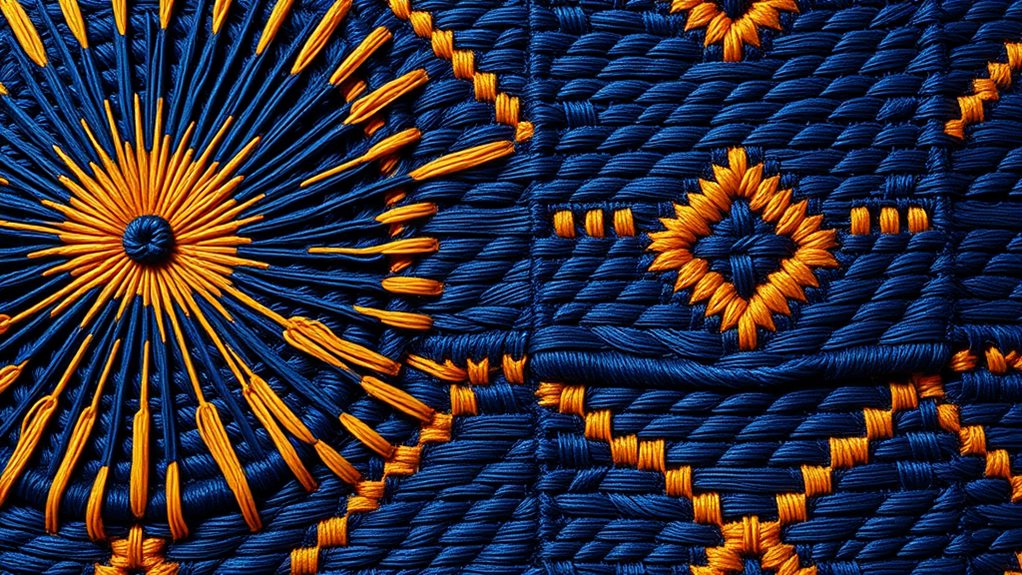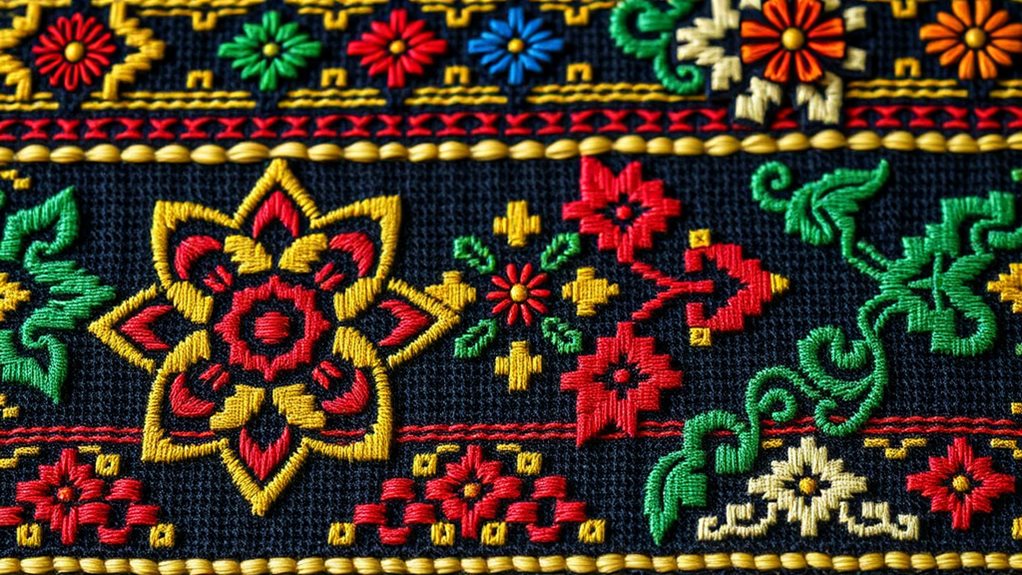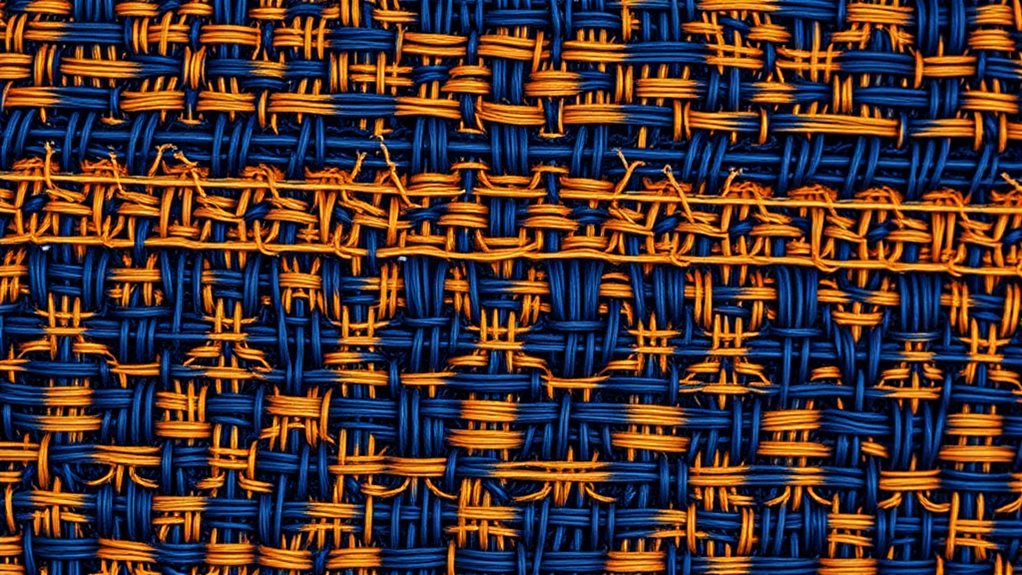Filipino weaving patterns hold a deeper meaning beyond their decorative appeal. Colors like red and yellow symbolize power and prosperity**. These colors are often incorporated into geometric designs and motifs, which are created using traditional looms such as the backstrap loom**.
The shapes used in these patterns also hold significance. Triangles and zigzags represent balance and the connection between heaven and earth. For example, the Ifugao people use these shapes to depict the harmony between the spiritual and physical worlds.
The unique cultural heritage of different regions is reflected in the distinct patterns of each area. The Ifugao mountains and the Visayan islands have their own distinct weaving styles, which showcase the diversity of Filipino culture. These patterns tell stories, embodying spiritual beliefs and agricultural practices, and represent a living connection to the past.
The intricate details woven into these textiles reveal a rich cultural history. By examining these patterns, one can gain a deeper understanding of the Philippines' cultural heritage and the significance of weaving in Filipino tradition.
Symbolism and Motifs

Deciphering the rich meaning in Filipino weaving patterns requires understanding the symbolism of colors and nature motifs.
Colors have distinct meanings in Filipino weaving patterns: Red often signifies power and bravery, while black represents harmony, and yellow symbolizes prosperity, especially within Yakan traditions.
Blue denotes peace, and brown, stability. These colors aren't just aesthetic choices; they reflect the cultural understanding of the communities that create these patterns.
Nature motifs also play a crucial role in the narrative of Filipino weaving patterns. Stars represent bountiful harvests****, echoing the agricultural dependence of communities like the Yakan.
Mountains symbolize strength and stability**, as seen in the *punoh-punoh* depiction. Serpents represent prosperity and boundaries**, particularly in Ifugao and other traditions.
Plant motifs, such as rice grains and fertility symbols in Ifugao and Yakan weaves, highlight the harmonious relationship between the communities and their environment, representing abundance and continued fertility.
The careful selection and placement of these motifs contribute to the complex visual language found in these weavings.
Geometric Patterns and Shapes
Filipino weaving patterns incorporate a wide range of geometric shapes and designs. Triangles often represent balance, appearing in mat weaving.
In Kalinga textiles, zigzag lines symbolize the connection between heaven and earth, mirroring their mountainous landscape. Ifugao Binanniya designs feature trapezoids, also representing this connection. Additionally, multicolored squares symbolize the diversity and unity of the Filipino people.
The techniques employed in Filipino weaving are diverse. The back-strap loom is used by numerous tribes to create intricate geometric patterns. The *ikat* method, a resist-dyeing technique, produces striking geometric designs in Maranao textiles.
Materials vary, including abaca fibers, cotton, and silk. Natural dyes, derived from plants, enhance the already rich palette.
Regional variations in Filipino weaving are notable. Kalinga textiles boast dominant red and black stripes with geometric patterns.
Yakan fabrics are characterized by bold, contrasting colors in large symmetrical patterns. Maranao weaves feature *okir*, geometric patterns used decoratively.
Ifugao Binanniya showcases ancient geometric designs. Mandaya *dagmay* textiles feature intricate designs relating to man and nature, such as lace-like edges, chevrons, crosses, star and diamond patterns, or zigzag and lattice designs.
Cultural and Spiritual Significance

Filipino weaving patterns hold deep cultural and spiritual significance****. These intricate designs reflect a rich cultural heritage passed down through generations, with each region boasting unique patterns that tell stories of history and craftsmanship.
For example, the T'nalak fabrics of the T'boli people** symbolize their cultural pride** and indigenous heritage.
Weaving is deeply intertwined with spiritual beliefs****. Many Filipinos believe that the process connects the spiritual and earthly domains, a belief that predates the arrival of Catholicism.
Textiles serve as cherished family heirlooms**, bringing protection and good fortune, reflecting deeply held spiritual beliefs. The T'boli people, for instance, believe that Fu Dalu, the guardian of the abacá plant, inspires weavers through dreams**, assuring the perfection of their fabrics.
Weaving is viewed as a meditative practice****, facilitating a connection to the divine and ancestral roots.
Offerings to spiritual entities often accompany the weaving process, underscoring its spiritual importance within the cultural heritage. This practice serves as a conduit to cultural and spiritual heritage, rather than just being an art form.
Materials and Techniques
The Philippines has a rich tapestry of materials and techniques in its diverse weaving traditions. Regional availability and fiber sourcing practices determine the choice of materials. In Ilocos, weavers primarily use cotton for their Inabel, while in Aklan, they favor piña (pineapple fibers) for high-quality textiles. In Kalinga, weavers incorporate a mix of banana, cogon, maguey, and sometimes polyester or cotton.
Traditional techniques showcase remarkable skill, with various methods reflecting regional adaptations. Handloom weaving using bamboo and string looms is commonly found in Aklan and Iloilo. Backstrap loom weaving, prevalent in mountain regions, requires coordination and is often attached to trees.
The Pinilian technique, using sticks and intricate sequences, is a specialty in Ilocos. The Ikat (Bë-bëd) resist dyeing method, used by Ifugao and other Cordilleran groups, creates distinctive blurred patterns. Twill weave adds texture to Kalinga textiles.
Weavers use various looms, including the pedal loom (Pangablan) in Ilocos, backstrap looms attached to trees, and frame and pit looms. Tools include wooden sticks and braces for backstrap looms and multi-heddles found in some Cordillera communities.
These practices highlight the ingenuity and resourcefulness of Filipino weavers and their commitment to weaving sustainability.
Regional Traditions and Challenges

Regional Weaving Traditions in the Philippines****
The Philippines is home to diverse weaving traditions, reflecting unique cultural identities and practices shaped by geographic location, available resources, and historical influences. Each region boasts distinct techniques and designs, making Filipino weaving heritage rich and complex.
Ilocos Region Weaving Traditions
The Ilocos Region is known for its intricate *binakul* and *pinilian* weaves, utilizing locally-sourced cotton.
These techniques showcase the Ilocano people's creative expression and weaving heritage. The Ilocano people's weaving techniques have been passed down through generations, making them an essential part of the region's cultural identity.
Cordillera Administrative Region Weaving Traditions
The Cordillera Administrative Region is home to various ethnic groups, including the Ifugao, who are known for their striking ikat textiles.
These groups utilize back-strap looms, showcasing their mastery of multi-heddle and *pinilian* techniques. The Ifugao people's textiles are essential to their spiritual practices and are often adorned with symbolic designs.
Visayas and Mindanao Region Weaving Traditions
The Visayas and Mindanao regions have a distinct weaving style, with the Visayas boasting luxurious piña textiles crafted from pineapple leaves.
These textiles represent cultural prestige and continuity and are often used in formal wear. The piña textiles are a testament to the region's sophisticated weaving heritage.
Challenges Facing Filipino Weaving Heritage
Historical events, such as colonization, have impacted the quality and production of certain textiles.
However, efforts to preserve and promote Filipino weaving heritage are ongoing through museums and collaborations with modern brands. These efforts aim to safeguard the country's unique regional influences and protect its priceless weaving heritage for future generations.
Questions and Answers
How Much Do These Textiles Cost?
Textile prices vary greatly due to several key factors. Fabric quality, materials, and design complexity play a significant role in determining the cost. For instance, high-quality fabrics like silk and wool are generally more expensive than lower-quality options like polyester.
Design complexity is another major cost influencer. Textiles with intricate patterns, such as those found in traditional African or Asian designs, command higher prices than simpler ones like solid colors or basic stripes. This increased cost is often due to the time-consuming process of creating these complex patterns.
Where Can I Buy Authentic Pieces?
Authentic pieces can be found at traditional markets, online shops, and artisan cooperatives. These platforms offer a direct connection to artisans and weavers, ensuring the authenticity of the pieces. Traditional markets, for instance, provide an opportunity to interact with local artisans and purchase handmade products. Online shops often partner with artisans to showcase and sell their work. Artisan cooperatives, on the other hand, are organizations that bring together local artisans to promote and sell their crafts. Additionally, cultural festivals offer a chance to purchase authentic pieces directly from weavers, allowing buyers to learn about the craftsmanship and cultural significance behind the products.
Are Weaving Classes Available?
Weaving classes are available. These classes often focus on teaching traditional techniques and exploring the cultural significance of weaving. You can find weaving classes at various institutions, including those that cater to indigenous communities, as well as workshops and educational institutions that specialize in the craft.
How Long Does It Take to Weave One?
The time it takes to weave one item varies greatly, from a few days to several weeks. This variation in time investment is largely due to the chosen weaving techniques and the design's complexity. For instance, a simple scarf might take a few days to complete using a basic tabby weave, while a complex tapestry with intricate patterns and multiple colors could take several weeks or even months to finish.
What Is the Most Challenging Pattern?
Determining the most challenging pattern is difficult due to the various complexities involved. The complexity and cultural significance of each pattern make objective comparison nearly impossible. Each design has its unique intricacies, such as the intricate details in traditional Arabic geometric patterns or the precise calculations required for creating fractals. These complexities, combined with the cultural importance and historical context of each pattern, make it challenging to compare them objectively.